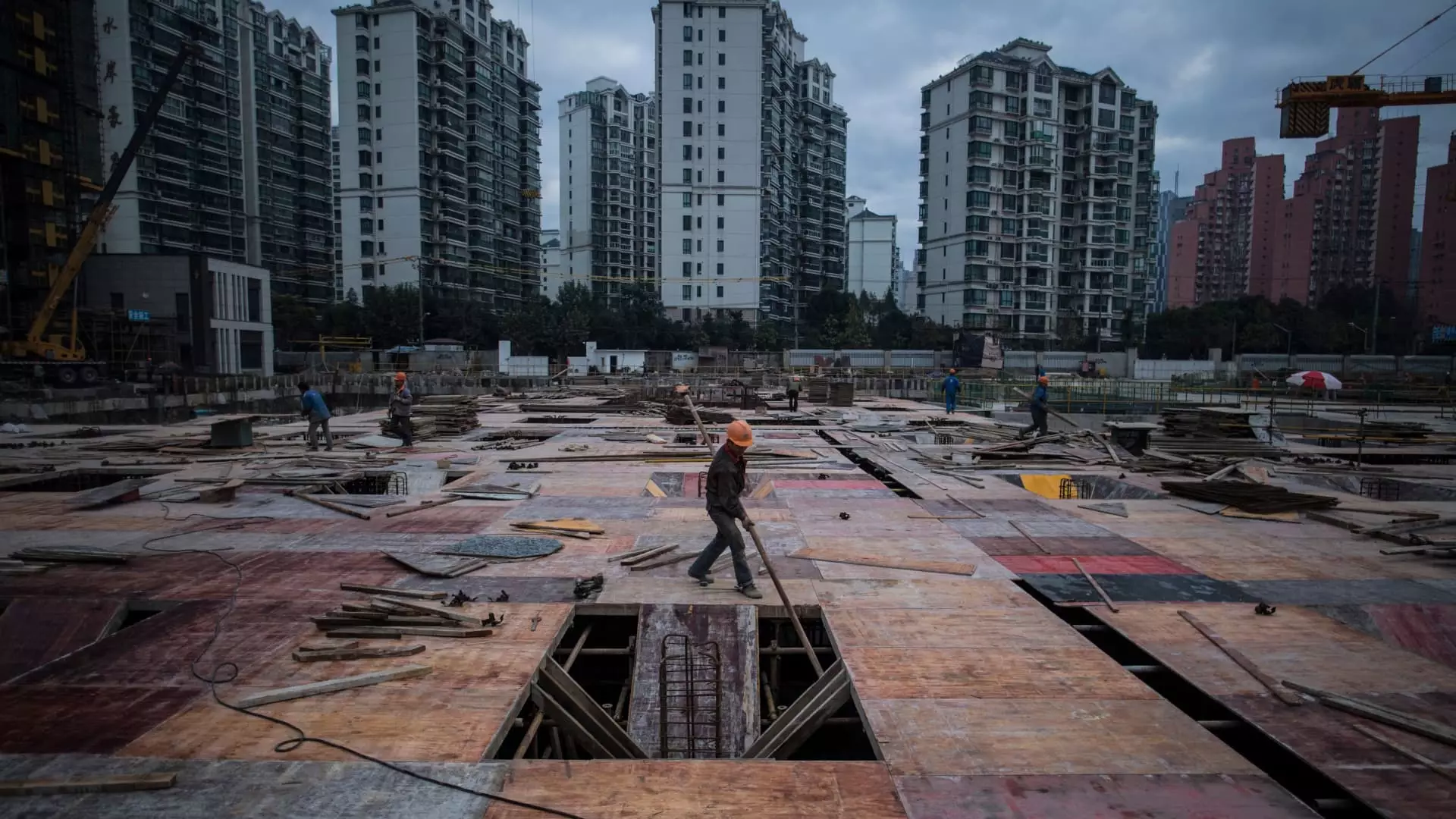China’s real estate sector stands at a precarious crossroads, muddled with challenges that stimulus measures have only marginally alleviated. Despite reports of a brief resurgence in home sales during the recent Golden Week holiday, analysts argue that these statistics do not signal a robust recovery. Instead, they highlight a layered complexity that besets the industry. An examination of the latest data reveals that while some urban areas experienced a momentary spike, the overarching trend continues to reflect significant decline, casting doubt on the sustainability of these rebounds.
During the Golden Week, which typically represents a peak for consumer spending, Beijing reported a remarkable 81% increase in average daily sales compared to the same period last year. However, this localized success obscures a broader narrative that reveals the persistence of downward trends in other major cities. According to the China Index Academy, a comprehensive survey of 25 cities indicated a staggering 27% decline in the overall daily area of new homes sold relative to the previous year. A closer look at tier 1 cities such as Shanghai, Guangzhou, and Shenzhen, which saw sales plummet by 61%, 59%, and 57% respectively, underscores the fragility of the market.
The historical context amplifies these concerns, as home sales during the Golden Week have been on a multi-year descent since 2021. The report indicated an alarming drop in average daily sales from 177,000 square meters in 2021 down to just 107,000 square meters this year. This trend begs the question: is the recent uptick in places like Beijing significant enough to suggest a reliable turning point, or merely a blip in a longer-term downward trajectory?
The sentiments surrounding the government’s recently implemented stimulus measures evoke a blend of optimism and skepticism among experts. While initiatives like easing mortgage rates, reducing down-payment ratios, and increasing quotas for apartment purchases may temporarily bolster consumer confidence, they do little to address deeper systemic issues. William Wu, an analyst from Daiwa Capital Markets, succinctly encapsulates this viewpoint, suggesting that without more sustained policy measures, long-term stabilization remains unlikely.
The data also bears out a worrying reality: only a temporary rebound has occurred compared to last year’s figures. A 23% rise in home sales, when juxtaposed against a weak previous base, could easily mislead stakeholders into overestimating the market’s vitality. The report emphasizes a particularly crucial point—home purchase orders tend to be larger towards month-end, indicating fluctuations that can easily skew perceptions of a market rebound.
Despite pockets of increased home buying activity, the broader economic landscape within the property sector remains ominous. Experts assert that the government must take more decisive action to unravel the knot of issues that has led to financial distress among property developers, characterized by excessive inventories and unfinished projects. Kenneth Ho, a credit strategist at Goldman Sachs, pointed out that the persistent problem of excess inventory calls for substantial policy innovations, yet there appears to be a lack of aggressive government response.
As we observe the potential pitfalls of this fragmented recovery, it’s critical to consider the vast implications of a struggling property market, not only for individual homeowners but for the broader financial ecosystem. The turmoil has already driven several major developers into debt defaults, causing cascading consequences across the real estate sector and pushing housing prices into freefall.
While there are signs of temporary uplift in some urban areas of China, the broader property market continues to grapple with deep-rooted issues. The government’s recent measures have resulted in momentary boosts to buyer sentiment, yet given the extent of the challenges, a more comprehensive and aggressive strategy is essential for genuine recovery. Until such actions are taken, the property market’s future remains uncertain, teetering between fragile recovery and imminent decline. An authentic revitalization requires thoughtful intervention, sustained support, and, crucially, a clearer pathway out of the ongoing crisis. Without these, the glimmers of optimism may quickly fade, leaving the sector to navigate through turbulent waters once again.

Leave a Reply